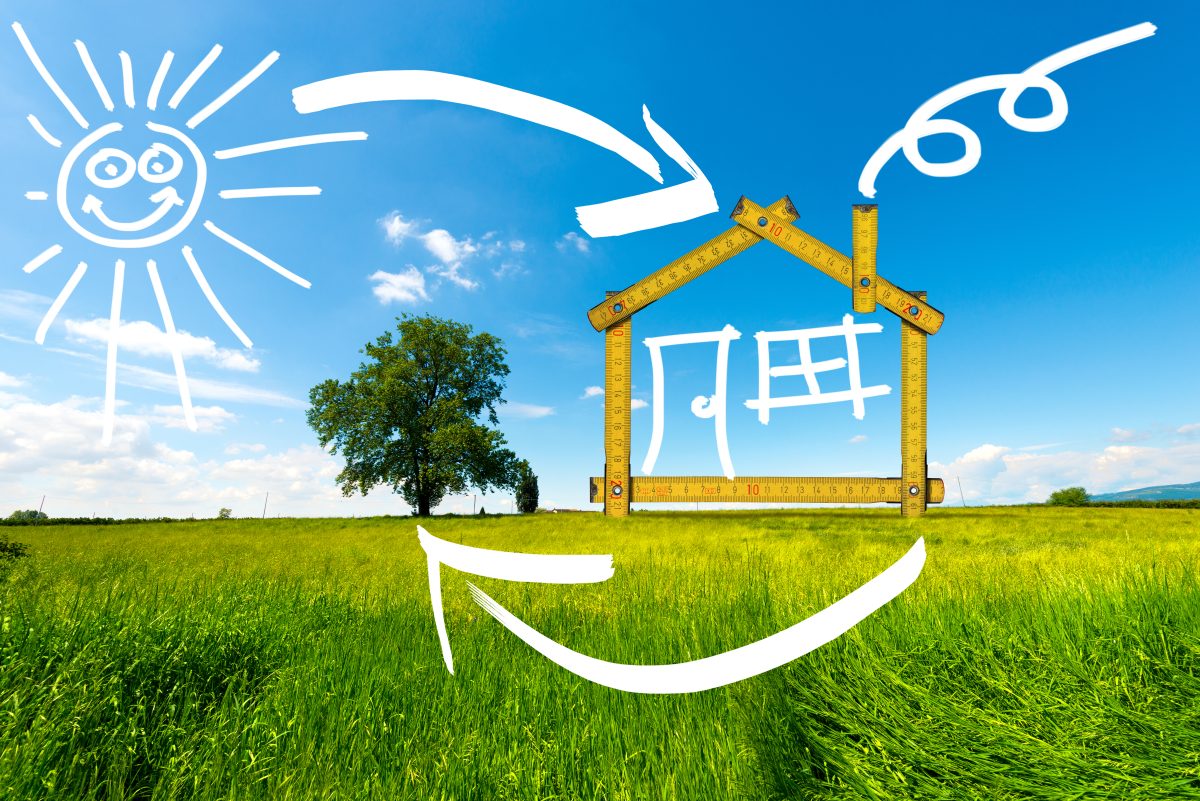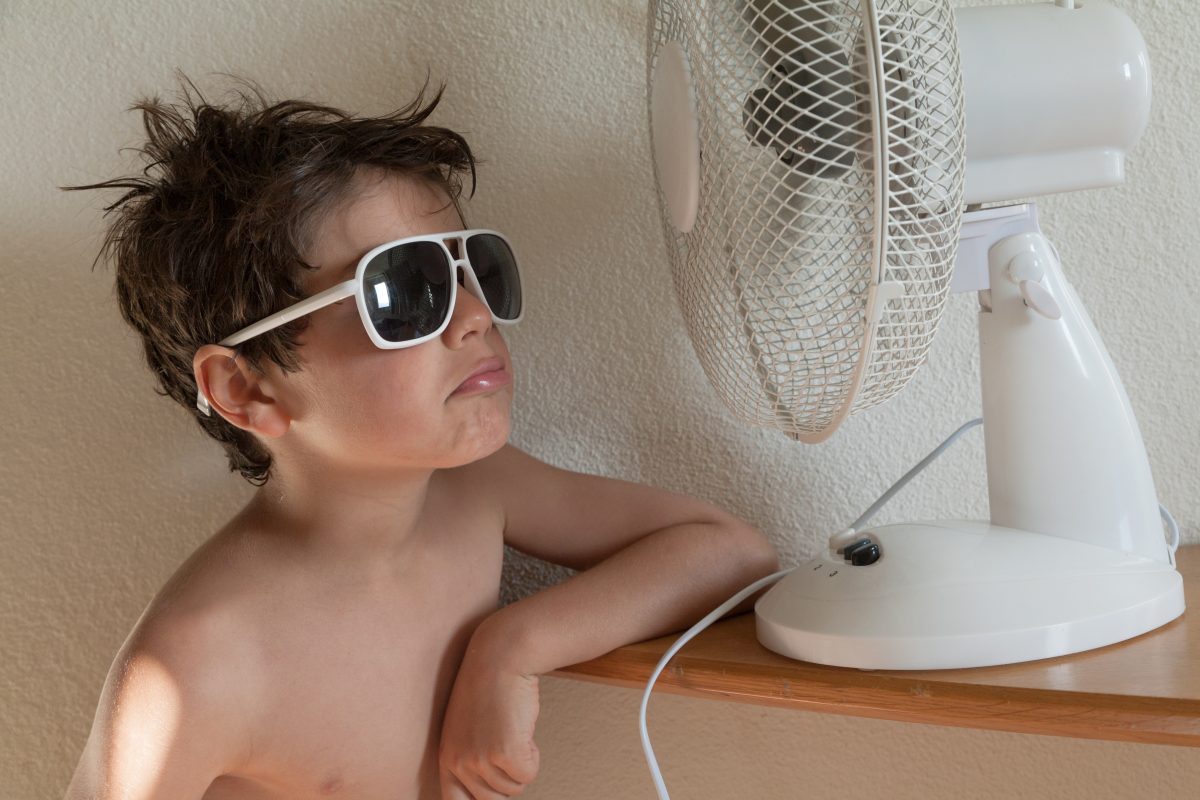
We’ve all been in somebody else’s home and noticed how much colder or warmer it is than our own. Finding out the how’s and why’s is the purpose of science. We use science to understand what makes some things work differently to others. Now what we should be doing is using this newly acquired knowledge to our advantage.
Ok, let’s start off with the whole hot and cold thing. Why is one house hotter or colder than the other. Location can definitely play a role in this, however we can place a lesser quality designed house in a ‘better’ location and still have it perform worse than a higher quality designed house in a worse location. Doesn’t make sense, read on.
Thermal Mass and cross ventilation will have a drastic effect on how well your house works at differentiating the outside temperature to the inside temperature. We desire a house in a cold climate to keep the cold out and the warmth in, and in reverse in a hot climate, heat out and cool in. Just open or close the windows right! Well no. While it will make a difference its not always practical and we can do better than that. In fact, providing ample amounts of cross ventilation isn’t your house making you cooler, it’s just letting the breeze cool you by evaporating the perspiration from your body. The air outside is not cooling down rapidly when it enters the house to make you feel cooler, its actually the same temperature as it was outside. Think about sitting under a tree or in a shady place outside. The air itself has not changed in temperature, you are just shaded from the suns radiated heat, thus making it feel cooler. So let’s consider how what the house is actually made of, can affect the environment inside.
Firstly, the science – Thermal Mass. This is the ability and capacity of a material to store heat. Concrete and Brick are fantastic examples. The sun shines on a concrete or brick wall and it heats it up. Some more quickly than others, it will absorb the heat and store it within itself, think of charging a battery, the charge or electricity is put into the battery and stored for later use. The longer the sun or the ‘hotter’ the temperature applied to it, the warmer and more heat it will store. When the heating source is taken away for example the sun goes down, the wall continues to radiate or release its stored heat into the area adjacent to it and depending on its ability to store heat, this can carry on for quite a long time, i.e. most of the night. This is why in colder climates we try to design and construct with materials that have higher amounts of Thermal Mass – brick and concrete walls and roofs. The house itself warms up during the day, storing the heat, then during the night this stored heat is released back into the immediate environment.

Now in warmer climates, storing up heat and releasing it is not really a desirable thing to do. (Better to eat the pizza than be the pizza! wonder why pizza ovens are made from bricks – they retain more heat for longer!) Especially when the temperature difference between day and night are not so great as those tend to be in colder climates. Think of a QLD summer, warm to hot all day, and only cools off a bit during the night. As a side note: near the coastline, we have the ocean, one huge temperature storage device that doesn’t really change much in temperature day to night, unlike away from the coast where the ground heats during the day, and immediately cools during the night. This is why country areas tend to be hotter during the day and cooler during the night than those by the ocean. Wow, who would have thought we could learn so much about our environment while learning about our houses! Now logically, in this climate, we don’t want our house to store up the energy in the form of heat and keep on cooking us all night, its bad enough during the day.
Now think of a piece of timber, sitting right along side a brick out in the sun. Both have warmed up, though the timber much less so, however even more alarming, when we move them both out of the sun, the timber will cool back down quite quickly, the brick won’t. Still not quite getting it, another example then. At some point most of us will have learned not to touch the bricks or stones around a fireplace or firepit (sometimes the only way a child will learn), they will burn you quick time. Now a stick or log however, provided its not completely on fire and the end you touch has no flames or coals, you can pick it up, you can even swing it around and make fantastic light trails through the night sky, that is right up until the time a grown up shouts at you and tells you to put it back. Ok, back to the principle, the brick or stone has a high thermal mass, it is storing the heat from the fire throughout its whole size, the stick however has a low thermal mass, and the heat does not store inside it.
Upon learning this critical piece of unwavering science, why are there so many brick houses in QLD I hear you cry. Yes, I too wondered why, until I took the “sales and spin” into account. Brick houses are advertised and indeed thought to be a great strong way to build a house. Who doesn’t want to live in a house than can provide the protection of a bunker when the weather goes bad right? So why then in our common brick veneer homes are the brick walls actually held up and prevented from falling over by the timber frame walls inside them? Best we don’t educate people about that fact, stick with the “strong safe house theme – it sells more houses, and we make more money”.
While brick and concrete houses can provide huge amounts of strength and protection, they also provide huge amounts of thermal mass and energy storage. While they can be recycled at a latter point in time, the method of recycling consumes a huge amount of energy and its not as ‘green or renewable’ as plantation trees that we can keep on growing and replacing. (note: plantation trees specifically grown for timber, not native forest). High mass structures also tend not to like to much of the inevitable movement that naturally occurs every day as things heat up, cool down, dry out and take in moisture. Think cracks.

Timber is not a high thermal mass product, nor are things like weatherboards, fibro, foam, natural fibres etc. These materials heat up and cool down too a much lesser extent than bricks and concrete. They too move naturally, though depending on the construction technique tend not to result in as many cracks whilst doing it. When used in a warmer climate, for instance much of Northern NSW and QLD timber houses will hold and retain far less heat during the day and cool much quicker at night – perfect! But what about cyclones? Timber constructed homes and technology have come a very long way throughout the past few decades. Incredibly strong structures can be made from timber and there are even multi-storey and high-rise buildings now being constructed around the world from timber. Cyclones, earthquakes, floods, all can be accounted for with timber construction methods. Besides, there are plenty of old timber houses around that have proven they can withstand the tests of time. Its more the construction method and maintenance that was used, rather than the materials themselves, that determined which ones are still around and which ones are gone.
Using science, we now understand why such a large majority of houses constructed in Northern NSW and QLD over the past few decades perform so badly at keeping us comfortable. Yes, they are generally doing a great job at providing us protection and security, but at the cost of being completely energy inefficient and naturally uncomfortable. We can and should have both! The technology, materials and design methods are all available right now. Sadly, it’s the public education and ‘sales mentality’ that are not.
What’s the ideal house for Northern NSW and QLD climate zones, not a trick question, of course it’s the one that you like the most. However, on a serious note, its one where the thermal mass is on the inside, not the outside of the house. Try sticking your hand on a rock or brick outside, now go inside and stick your hand on that beautiful stone or artificial stone benchtop. Get my drift. IF we place our thermal mass on the inside, the natural shade and if we use air-conditioning, coolness it provides will in turn cool all our thermal mass. And because our thermal mass stores both cold and heat equally well, we will require less energy to keep it that way. Now on the outside, we have low thermal mass products, timber, weatherboards, fibro etc. And yes we can still look like a modern rendered home by using rendered foam. So on the outside, not only does the material in the first place heat up less, it will store much less of this energy in the form of heat, and will cool down very quickly once its heating source, the sun, has gone. No radiating heat into the house long after the sun has gone down! Cooler house, happy resident. It really is quite simple once you understand thanks to science, work with your climate rather than against it and it will do the same for you.
We will leave insulation, mechanical heating, cooling and shading devices for another blog, don’t want you going to sleep on me. Where just getting started with becoming a building design guru.
At Design Science, whilst we leave the ultimate decision up to you, we provide all our clients with the options of doing things “how they should be, not how they are”.